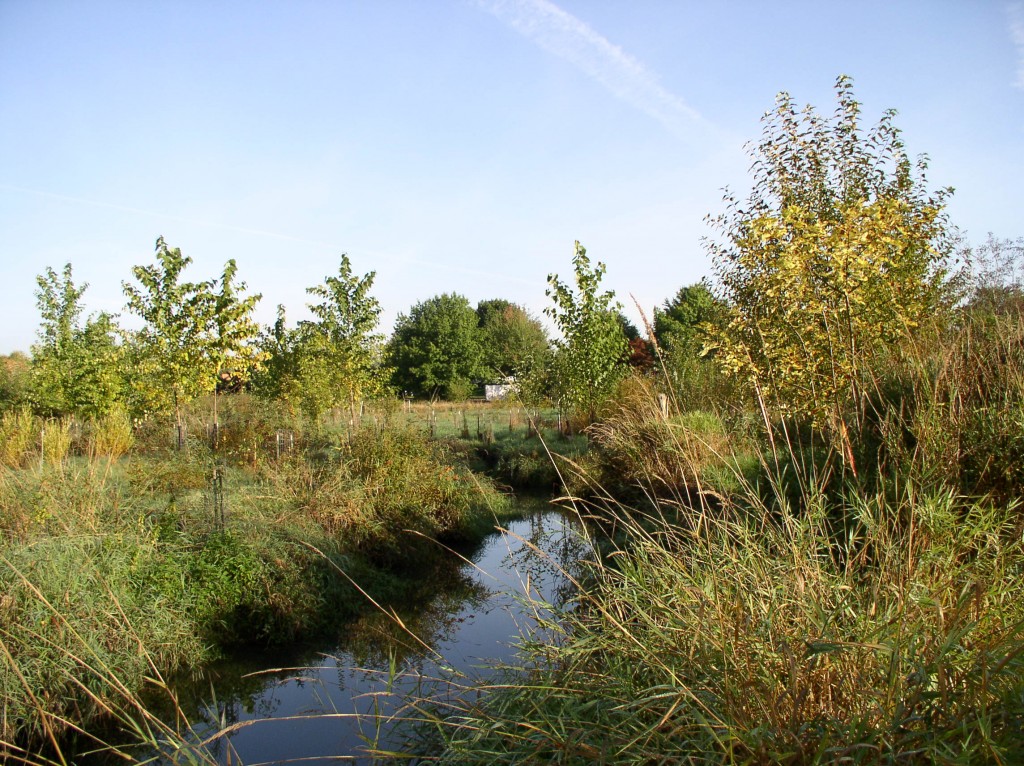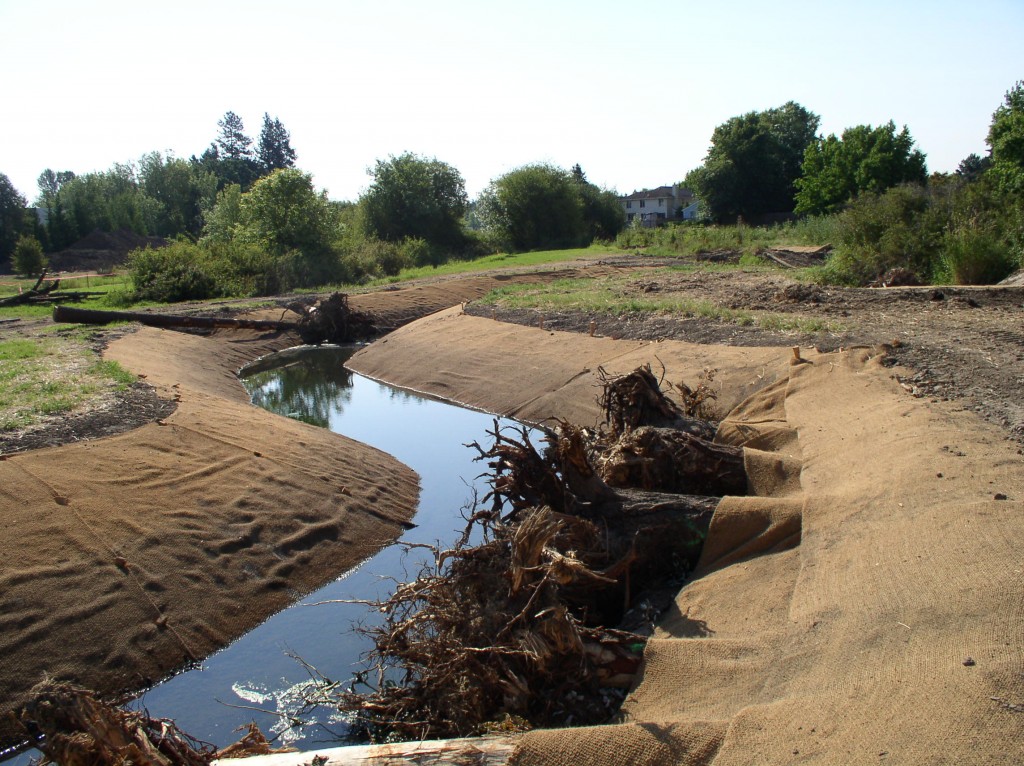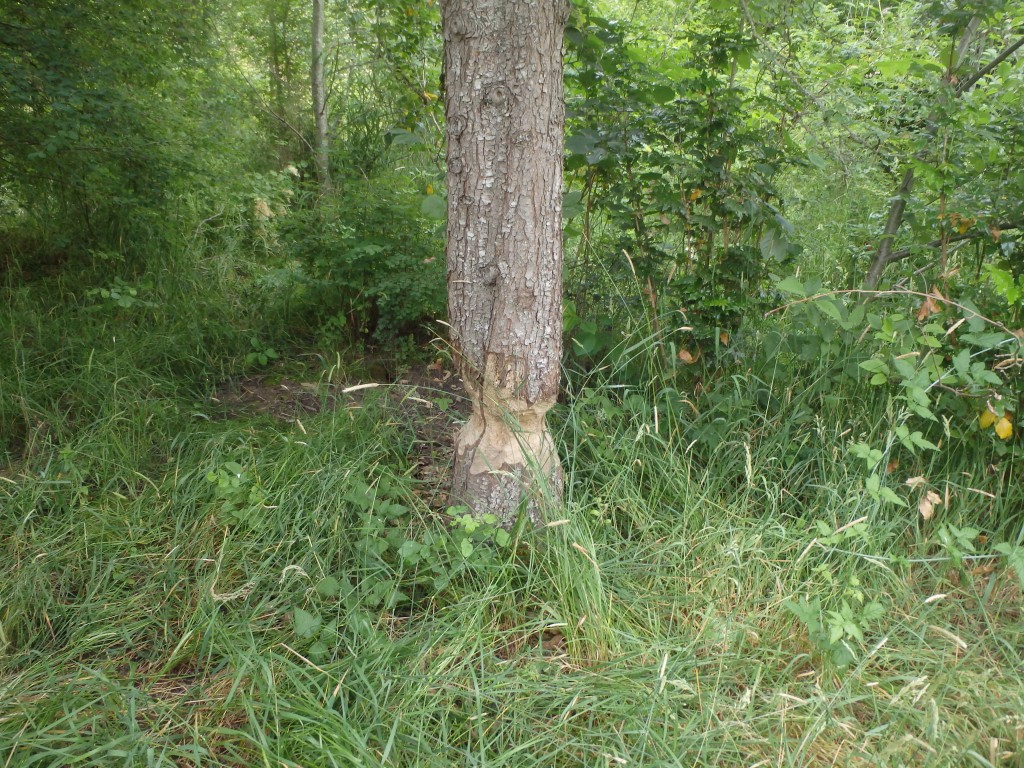
Reeds and roses tower above a strange mix of smooth green shoots and pink-flowered thorns. It’s an unusual combination of plants, unlike anything we’ve seen in our stream surveys so far. Dew clusters on reeds, finding scant shine in the gray light of the early morning. We have walked just ten meters from a restored stream bank in Sherwood, Oregon, measuring plant diversity, vigor, and height as we go. Though we got a kick out of its name as we drove into town, Sherwood is calmly residential, with no trace of its namesake’s fictional forest. But something about this small clearing – a startling change from the dense thicket of willow and dogwood before it – feels like a world apart.
This tiny discovery feels unexpectedly thrilling – no doubt, in large part because our eyes are still acclimating to the diversity of Oregon’s riparian plant distribution. Still, there’s a sense that we’ve come upon a truly wild ecosystem, quietly and determinedly staking its claim onto the patchwork of suburban Oregon. It’s an anomaly made all the more unlikely by the fact that, this stream, along with many others in the watershed, were almost invisible about 10 years ago, “buried under a sea of invasive reed canary grass,” according to Kendra Smith, the Willamette Watershed Program Director at the Bonneville Environmental Foundation (BEF), and a former Clean Water Services staff member charged with restoring the Tualatin.
In 2000, Clean Water Services (CWS) began to restore prioritized streams within the Tualatin River Basin. Urban and agricultural land use has degraded segments along these waterways, impairing their ability to provide ecological functions and social value. Many impacted sections seem ecologically “stuck” – steeply eroded banks isolate the steam’s water from the surrounding vegetation and floodplain. Without this connection to the land, streams become stunted in their ability to regulate water temperature, filter and remove sediments and nutrients, sequester carbon, or provide wildlife habitat.

Through an innovative use of the National Pollution Discharge Elimination (NPDES) permit, CWS and other local entities, including the Washington County Soil and Water Conservation District, participating cities, and local NGOs, partner with landowners to restore streamside vegetation, and, occasionally, to re-meander previously straightened stream channels. The restoration efforts work from headwaters down, increasing native riparian cover, which helps stabilize banks and filter runoff. By providing shade, these plants also help lower stream temperatures, creating the cooler water fish need to survive. The restoration efforts also encourage the re-establishment of beaver, whose dams help increase stream flow and recharge groundwater.
These ecological improvements in stream system function allow CWS to take “credit” for the reduction in stream temperatures, rather than build a chiller at its wastewater treatment plants. Along with flow restoration and wastewater reuse practices, the collective stream corridor restoration enables CWS to achieve the same water temperature reduction a chiller would. This approach also rebuilds natural processes in the watershed, providing “a multitude of ecological, social, and economic benefits that engineered solutions do not.”
We are in Oregon to help determine how – and how well – different approaches to this kind of stream corridor restoration have changed, and hopefully healed, formerly degraded sites. Another field team is taking a similar look at streams further south in the Willamette Watershed. If all goes as planned, the summer’s surveys will inform a state-wide guide to riparian revegetation that could help restoration practitioners utilize techniques that yield the most ecological bang for their buck.
Specifically, we’re trying to hone in on the link between streamside vegetation and stream health. As we tromp across suburban parks and rural fields, we look for thresholds. Some of the sites we visit have been thickly planted; others stretch out the space between pines and ninebarks. A few sites’ banks host such textbook-perfect examples of high plant diversity as to seem almost unreal – birds congregate especially heavily here. In other locations, columns of rose, willow, and dogwood form prickly, single-species blockades to the water. More densely – and diversely – planted sites may help streams withstand swings in climate and water availability, but can require higher initial planting costs and maintenance. Some sites may be able to recover through re-planting alone. Steeply incised streams may also need physical reconstructions of their stream channel in order to really rebound.
And then there is the Tualatin’s wild card: the beaver. In Oregon, as in much of the United States, beaver historically shaped riparian systems, building dams that connected rivers with their floodplains, raised groundwater levels, and provided fish habitat. Beaver-built wetlands help keep water available throughout Oregon’s dry summer months, supporting plant and wildlife communities. These wetlands can also help protect homes and cities from severe storms, by slowing and spreading water out during high flow events. However, the same agricultural, forestry and urban practices that facilitated the decline of the Tualatin’s tributaries also pushed beaver out of this habitat, removing a vital cog in this ecosystem, and driving its degradation forward. With the reconstruction of streamside habitat, some see an opportunity to reverse this momentum.
As we prepared for the stream surveys, we kept our eyes peeled for any signs of these rodents. Kendra had warned us that she was unsure of what we might find. After years of absence, there was no telling if beaver would return to – and be able to eke a habitat out of – these sites. At the first stream, we saw just hints of their presence – paw prints near the water’s edges, old sloughs we tumbled into and struggled to climb up. We debated whether individual branches showed signs of being gnawed at, or if they had simply been broken by water and wind. The second site offered a more complete introduction. There was no mistaking the characteristic mud-slapped dams, or the difficulty of staying dry while wading through them. By the end of the summer, we had run into dams so frequently we could predict their presence from far downstream. Willows stood in rows made strange by the stream’s overtopping of its former boundaries. Precisely-felled trees and wetlands that stretched beyond the reach of the fifty-meter measuring tape we carried with us testified to the species’ singular impact on the ecosystem.

The re-establishment of beaver and of riparian vegetation often underwrite each other. Beavers harvest woody material in order to build their dams. This vegetation, in turn, relies on consistent access to water – the kind of wet conditions that dams help create – in order to flourish. A growing number of restoration practitioners and agency scientists hypothesize that reestablishing native vegetation (i.e., beaver food) can speed up the recovery of streams. As new dams overtop incised banks, they reconnect streams with their floodplains and help establish healthy riparian, wetland and floodplain conditions.
Proponents of this theory note “it won’t be possible, or sensible, to ‘beaver-up’” steams everywhere. Still, these connections offer one path towards reversing the negative feedback loop triggered by the loss of riparian habitat. Getting the vegetation right, in other words, may jumpstart the move from an engineered recovery to an autonomous, and ever-so-slightly wilder, one.
Edited by Timothy Brown.